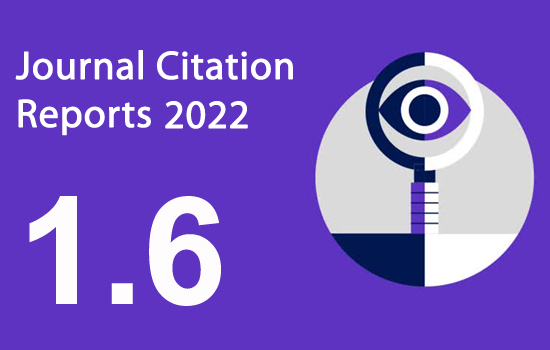Condición muscular y estabilidad del tronco en judocas de nivel nacional e internacional
DOI:
https://doi.org/10.18002/rama.v8i2.934Palabras clave:
Estabilidad del raquis, posturografía, acondicionamiento muscular, dinamometría isocinética, rendimiento deportivoResumen
Antecedentes: Desde un punto de vista teórico, el desarrollo de la capacidad para estabilizar el tronco podría mejorar el rendimiento del judoca a través del desarrollo del control del equilibrio corporal y la optimización de la transmisión de fuerzas desde los miembros inferiores hacia los miembros superiores. Sin embargo, carecemos de evidencias científicas que permitan establecer una relación clara entre la estabilidad del tronco y el rendimiento en judo.
Objetivo: El objetivo principal del estudio fue determinar si la valoración de la estabilidad del tronco y la fuerza y resistencia muscular permitían diferenciar entre judocas de categoría nacional (n = 7) e internacional (n = 6). Asimismo, se analizó la relación entre la estabilidad del tronco y la fuerza y resistencia de la musculatura implicada en el control de la estabilidad.
Método: Para valorar la estabilidad del tronco se analizó tanto la respuesta del tronco ante cargas súbitas aplicadas mediante un mecanismo de tracción neumática, como el control postural del tronco mediante el paradigma del asiento inestable. Para valorar la fuerza y resistencia muscular se realizó un test de flexión y extensión del tronco en un dinamómetro isocinético.
Resultados/Conclusiones: Los judocas de categoría internacional mostraron menor desplazamiento del CoP en la tarea más compleja sobre el asiento inestable (7.00±1.19 vs 8.93±1.45 mm; p=.025) y mayor momento de fuerza relativo de la musculatura extensora (7.05±0.87 vs 5.74±0.72 Nm; p=.013) que los judocas de categoría nacional. Según estos resultados, la condición muscular y la estabilidad del tronco son cualidades a tener en cuenta en la preparación física de los judocas. El análisis correlacional no encontró relación entre las variables analizadas, por lo que la fuerza y resistencia muscular no parecen tener un efecto importante sobre el rendimiento en los test de estabilidad del tronco.
Descargas
Métricas alternativas
Citas
Akuthota, V., Ferreiro, A., Moore, T., & Fredericson, M. (2008). Core stability exercise principles. Current Sports Medicine Reports, 7(1), 39‐44.
Allum, J.H.J., Bloem, B.R., Carpenter, M.G., Hulliger, M., & Hadders‐Algra M. (1998). Proprioceptive control of posture: a review of new concepts. Gait Posture, 8, 214–242.
Borghuis, J., Hof, A.L., & Lemmink, K.A. (2008). The importance of sensory‐motor control in providing core stability: implications for measurement and training. Sports Medicine, 38(11), 893‐916.
Burg, J.C.E., Wegen, E.E.H., Rietberg, M.B., Kwakkel, G., & van Dieën, J.H. (2006). Postural control of the trunk during unstable sitting in Parkinson’s disease. Parkinsonism & Related Disorders, 12, 492‐498.
Cowley, P.M., Fitzgerald, S., Sottung, K., & Swensen, T. (2009). Age, weight, and the front abdominal power test as predictors of isokinetic trunk strength and work in young men and women. Journal of Strength & Conditioning Research, 23(3), 915‐925.
Cowley, P.M., & Swensen, T.C. (2008). Development and reliability of two core stability field test. Journal of Strength & Conditioning Research, 22(2), 619‐624.
Cholewicki, J., Greene, H.S., Polzhofer, G.K., Galloway, M.T., Shah, R.A., & Radebold, A. (2002). Neuromuscular function in athletes following recovery from a recent acute low back injury. Journal of Orthopaedic & Sports Physical Therapy, 32(11), 568‐575.
Cholewicki, J., Polzhofer, G.K., & Radebold, A. (2000). Postural control of trunk during unstable sitting. Journal of Biomechanics, 33(12), 1733‐1737.
Dietz, V., Trippel, M., Ibrahim, I.K., & Berger, W. (1993). Human stance on a sinusoidally translating platform: balance control by feedforward and feedback mechanisms. Experimental Brain Research, 93,352–362.
Duarte, M. (2000). Análise estabilográfica da postura ereta humana quasiestática [tese livredocência]. São Paulo: Escola de Educação Física e Esporte, Universidade de São Paulo.
Elvira, J.L.L., Barbado, D., Juan‐Recio, C., García‐Vaquero, M.P., López‐Valenciano, A., López‐Plaza, D., Montero‐Carretero, C., & Vera‐Garcia, F.J. Diferencias en la estabilización del tronco sobre un asiento inestable entre piragüistas, judocas y sujetos físicamente activos. Revista Kronos (En prensa).
Girard, O., Mendez‐Villanueva, A., & Bishop, D. (2011). Repeated‐Sprint Ability – Part I. Factors Contributing to Fatigue. Sports medicine, 41(8), 673‐694.
Grabiner, M.D., Jeziorowski, J.J., & Divekar, A.D. (1990). Isokinetic measurements of trunk extensión and flexion performance collected with the biodex clinical data station. Journal of Orthopaedic & Sports Physical Therapy, 11, 590‐598.
Hancock, G.R., Butler, M.S., & Fischman, M.G. (1995). On the Problem of Two‐Dimensional Error Scores: Measures and Analyses of Accuracy, Bias, and Consistency. Journal of Motor Behavior, 27, 241‐250.
Juan‐Recio, C., Lopez‐Valenciano, A., Barbado, D., Lopez‐Plaza, D., Montero, C., & Vera‐Garcia, F.J. (2013). Efecto de la condición muscular en la estabilidad del tronco en judocas de élite. Trabajo presentado en el I Congreso Internacional de Judo De Frutos‐UMH, Alicante.
Kibler, W.B., Press, J., & Sciascia A. (2006). The role of core stability in athletic function. Sports Medicine, 36(3), 189‐198.
Kort, H.D., & Hendriks, E.R. (1992). A comparison of selected isokinetic trunk strength parameters of elite male judo competitors and cyclists. Journal of Orthopaedic & Sports Physical Therapy, 16(2), 92‐96.
Langrana, N.A., Lee, C.K., Alexander, H., & Mayott, C.W. (1984). Quantitative assessment of back strength using isokinetic testing. Spine, 9, 287‐290.
Lee, H., & Granata, K.P. (2008). Process stationarity and reliability of trunk postural stability. Clinical Biomechanics, 23(6), 735‐742.
Leetun, D.T., Ireland, M.L., Willson, J.D., Ballantyne, B.T., & Davis, I.M. (2004). Core stability measures as risk factors for lower extremity injury in athletes. Medicine & Science in Sports & Exercise, 36(6), 926‐934.
López‐Valenciano, A., Juan‐Recio, C., Barbado, D., López‐Elvira, J.L., Montero, C., & Vera‐Garcia, F.J. (2013). Perfil de la estabilidad mecánica del tronco en judocas de elite. Trabajo presentado en el I Congreso Internacional de Judo De Frutos‐UMH. Alicante.
Mayer, T., Gatchel, R., Betancur, J., & Bovasso, E. (1995). Trunk muscle endurance measurement. Isometric contrasted to isokinetic testing in normal subjects. Spine, 20, 920‐927.
McGill, S.M. (2002). Low back disorders. Evidencebased prevention and rehabilitation. Champaign, Illinois: Human Kinetics.
Nesser, T. W., Huxel, K. C., Tincher, J. L., & Okada, T. (2008). The relationship between core stability and performance in division I football players. Journal Strength & Conditional Research, 22(6), 1750‐1754.
Perrot, C., Deviterne, D., & Perrin, P.H. (1998). Influence of training on postural and motor control in a combative sport. Journal of Human Movement Studies, 35, 119‐135.
Perrin, P., Deviterne, D., Hugel, F., & Perrot, C. (2002). Judo, better than dance, develops sensorimotor adaptabilities involved in balance control. Gait Posture, 15(2), 187‐194.
Prieto, T.E., Myklebust, J.B., Hoffmann, R.G., Lovett, E.G., & Myklebust, B.M. (1996). Measures of postural steadiness: differences between healthy young and elderly adults. IEEE Transactions on Biomedical Engineering, 43, 956‐966.
Preuss, R. & Fung, J. (2008). Musculature and biomechanics of the trunk in the maintenance of upright posture. Journal of Electromyography & Kinesiology, 18(5), 815‐828.
Reed, C.A., Ford, K.R., Myer, G.D., & Hewett, T.E. (2012). The effects of isolated and integrated 'corestability' training on athletic performance measures: a systematic review. Sports Medicine, 42(8), 697‐706.
Reeves, N.P., Narendra, K.S., & Cholewicki, J. (2007). Spine stability: The six blind men and the elephant. Clinical Biomechanics, 21(5), 266‐274.
Sutarno, C.G. & McGill, S.M. (1995). Isovelocity investigation of the lengthening behaviour of the erector spinae muscles. European Journal of Applied Physiology and Occupational Physiology, 70, 146‐153.
Sung, P.S., Yoon, B., & Lee, D.C. (2010). Lumbar spine stability for subjects with and without low back pain during one‐leg standing test. Spine, 35(16), E753‐760.
vanDieën, J.H., Koppes L.L.J., & Twisk, J. (2010a). Low‐back pain history and postural sway in unstable sitting. Spine, 35, 812–817.
vanDieen, J.H., Koppes, L.L., & Twisk, J.W. (2010b). Postural sway parameters in seated balancing; their reliability and relationship with balancing performance. Gait Posture, 31(1), 42‐46.
vanDieën, J.H., Luger, T., & van der, Eb. (2012). Effects of fatigue on trunk stability in elite gymnasts. European Journal of Applied Physiology, 112(4), 1307‐13.
Vera‐Garcia, F.J., Brown, S.H.M., Gray, J.R., & McGill, S.M. (2006). Effects of different levels of torso coactivation on trunk muscular and kinematic responses to posteriorly applied sudden loads. Clinical Biomechanics, 21(5), 443‐ 455.
Vera‐Garcia, F.J., Elvira, J.L.L., Brown, S.H.M., & McGill, S.M. (2007). Effects of abdominal stabilization maneuvers on the control of spine motion and stability against sudden trunk perturbations. Journal of Electromyography and Kinesiology, 17(5), 556‐567.
Watkins, M.P. & Harris, B.A. (1983). Evaluation of isokinetic muscle performance. Clinics in Sports Medicine, 2, 37‐53.
Winter, D. A. (1990). Biomechanics and Motor Control of Human Movement. 2nd ed. Hoboken – New Jersey: Wiley.
Yoshitomi, S.K., Tanaka, C., & Duarte, M. (2006). Postural responses to unexpected external perturbance in judoists of different ability levels. Revista Brasileira de Medicina do Esporte, 1(12), 145e‐148e.
Zazulak, B., Cholewicki, J., & Reeves, N.P. (2008). Neuromuscular control of trunk stability: clinical implications for sports injury prevention. Journal of the American Academy of Orthopaedic Surgeons, 16(9), 497‐505.
Zazulak, B.T., Hewett, T.E., Reeves, N.P., Goldberg, B., & Cholewicki, J. (2007). Deficits in neuromuscular control of the trunk predict knee injury risk: a prospective biomechanicalepidemiologic study. The American Journal of Sports Medicine, 35(7), 1123‐30.
Descargas
Publicado
Cómo citar
Número
Sección
Licencia
Derechos de autor 2013 Casto Juan-Recio, David Barbado, Alejandro López-Valenciano, Diego López-Plaza, Carlos Montero-Carretero, Francisco J. Vera-Garcia

Esta obra está bajo una licencia internacional Creative Commons Atribución-NoComercial-CompartirIgual 4.0.
Los autores que publican en esta revista están de acuerdo con los siguientes términos:
- Los autores ceden de forma no exclusiva los derechos de explotación (reproducción, distribución, comunicación pública, transformación) a la Universidad de León, por lo que pueden establecer, por separado, acuerdos adicionales para la distribución no exclusiva de la versión de la obra publicada en la revista (por ejemplo, alojarlo en un repositorio institucional o publicarlo en un libro), con un reconocimiento de su publicación inicial en esta revista.
- Este trabajo se encuentra bajo la Creative Commons Attribution-NonCommercial-ShareAlike 4.0 International License. Puede consultarse desde aquí la versión informativa y el texto legal de la licencia.
- Se permite y se anima a los autores a difundir electrónicamente las versiones pre-print (versión antes de ser evaluada) y/o post-print (versión evaluada y aceptada para su publicación) de sus obras antes de su publicación, ya que favorece su circulación y difusión más temprana y con ello un posible aumento en su citación y alcance entre la comunidad académica.











